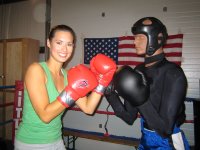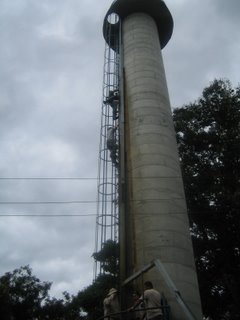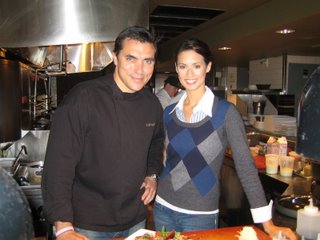Science-Fiction Becomes Reality
Few stories can touch you like that of a medical feat such as this – the world’s first laboratory grown bladder. Reading back over some of my previous posts, I noticed the term `incredible’ has often been used to describe my technological encounters and this story warrants yet another dose of the superlative. Seeing organs grown right before your eyes is mind-blowing, especially when you consider the implications of this medical triumph and its capacity to change lives. As of January this year, the organ transplant waiting list in Australia totalled 1716 and almost 54 times that in the United States at 91 568. Reducing those figures with organs grown from the patient’s own cells is revolutionary.
 The concept evokes a strong sense of familiarity. As a recurring theme in science-fiction films such as `The Island’ (2005), a remake of the 1976 classic `Logan’s Run’, it almost seems surreal. But the science of tissue engineering is not new. It was coined back in 1986 when Dr Joseph Vacanti proposed a scaffold made out of bio-absorbable material as a means of growing a three-dimensional organ. The cells could be seeded along the model or scaffold, where they'd continue to grow and develop into a fully functioning organ. This was the process used by Dr Anthony Atala in his development of the first successful laboratory-grown bladder at the Wake Forest Institute for Regenerative Medicine in North Carolina.
The concept evokes a strong sense of familiarity. As a recurring theme in science-fiction films such as `The Island’ (2005), a remake of the 1976 classic `Logan’s Run’, it almost seems surreal. But the science of tissue engineering is not new. It was coined back in 1986 when Dr Joseph Vacanti proposed a scaffold made out of bio-absorbable material as a means of growing a three-dimensional organ. The cells could be seeded along the model or scaffold, where they'd continue to grow and develop into a fully functioning organ. This was the process used by Dr Anthony Atala in his development of the first successful laboratory-grown bladder at the Wake Forest Institute for Regenerative Medicine in North Carolina.
Although extremely complex, the procedure actually sounds quite simple in theory. First, a small biopsy is taken from the patient’s organ. In the lab, growth factors are added to enable the cells to multiply outside the body. This nutrient rich solution is placed in a bioreactor, a device that replicates the homeostatic environment of a human being required for cell growth. While it can take years to develop and perfect these growth factors, the correct solution is powerful enough to cause a group of cells about one centimetre in size to multiply to fill a football field in about 60 days. The multiplied cells are seeded onto a collagen scaffold and returned to the bioreactor, where they continue to grow. Finally, about 7-8 weeks after the biopsy, the model is implanted into the body where it eventually degrades as the new organ or tissue integrates with the body.
The procedure overcomes the two major risks associated with previous treatment options. Firstly, the engineered bladders are grown from the patient’s own cells so there is no risk of rejection as is the case for organ donor recipients. An alternative treatment is to repair the non-functioning bladder tissue with tissue from the intestines, however this may lead to problems such as osteoporosis, kidney stone formation, and increased risk of cancer. This is because the intestine is designed to absorb nutrients, whereas the bladder is designed to excrete. Testing showed that the engineered bladders functioned as well as bladders that are repaired with intestine tissue, but with none of the ill effects.
Dr Atala is currently working to grow 20 different tissues and organs and believes that tissue engineers could one day grow a human heart. While the science needs further study before it can be widely used, additional clinical trials of the bladders are scheduled to begin later this year. Scientists hope that laboratory-grown organs could one day help solve the shortage of donated organs available for transplantation. After sharing in the passion and skill of these amazing scientists, I believe it’s only a matter of time.
 The concept evokes a strong sense of familiarity. As a recurring theme in science-fiction films such as `The Island’ (2005), a remake of the 1976 classic `Logan’s Run’, it almost seems surreal. But the science of tissue engineering is not new. It was coined back in 1986 when Dr Joseph Vacanti proposed a scaffold made out of bio-absorbable material as a means of growing a three-dimensional organ. The cells could be seeded along the model or scaffold, where they'd continue to grow and develop into a fully functioning organ. This was the process used by Dr Anthony Atala in his development of the first successful laboratory-grown bladder at the Wake Forest Institute for Regenerative Medicine in North Carolina.
The concept evokes a strong sense of familiarity. As a recurring theme in science-fiction films such as `The Island’ (2005), a remake of the 1976 classic `Logan’s Run’, it almost seems surreal. But the science of tissue engineering is not new. It was coined back in 1986 when Dr Joseph Vacanti proposed a scaffold made out of bio-absorbable material as a means of growing a three-dimensional organ. The cells could be seeded along the model or scaffold, where they'd continue to grow and develop into a fully functioning organ. This was the process used by Dr Anthony Atala in his development of the first successful laboratory-grown bladder at the Wake Forest Institute for Regenerative Medicine in North Carolina.Although extremely complex, the procedure actually sounds quite simple in theory. First, a small biopsy is taken from the patient’s organ. In the lab, growth factors are added to enable the cells to multiply outside the body. This nutrient rich solution is placed in a bioreactor, a device that replicates the homeostatic environment of a human being required for cell growth. While it can take years to develop and perfect these growth factors, the correct solution is powerful enough to cause a group of cells about one centimetre in size to multiply to fill a football field in about 60 days. The multiplied cells are seeded onto a collagen scaffold and returned to the bioreactor, where they continue to grow. Finally, about 7-8 weeks after the biopsy, the model is implanted into the body where it eventually degrades as the new organ or tissue integrates with the body.
The procedure overcomes the two major risks associated with previous treatment options. Firstly, the engineered bladders are grown from the patient’s own cells so there is no risk of rejection as is the case for organ donor recipients. An alternative treatment is to repair the non-functioning bladder tissue with tissue from the intestines, however this may lead to problems such as osteoporosis, kidney stone formation, and increased risk of cancer. This is because the intestine is designed to absorb nutrients, whereas the bladder is designed to excrete. Testing showed that the engineered bladders functioned as well as bladders that are repaired with intestine tissue, but with none of the ill effects.
Dr Atala is currently working to grow 20 different tissues and organs and believes that tissue engineers could one day grow a human heart. While the science needs further study before it can be widely used, additional clinical trials of the bladders are scheduled to begin later this year. Scientists hope that laboratory-grown organs could one day help solve the shortage of donated organs available for transplantation. After sharing in the passion and skill of these amazing scientists, I believe it’s only a matter of time.







